Keeping a Record of Children’s Helicopter Stories
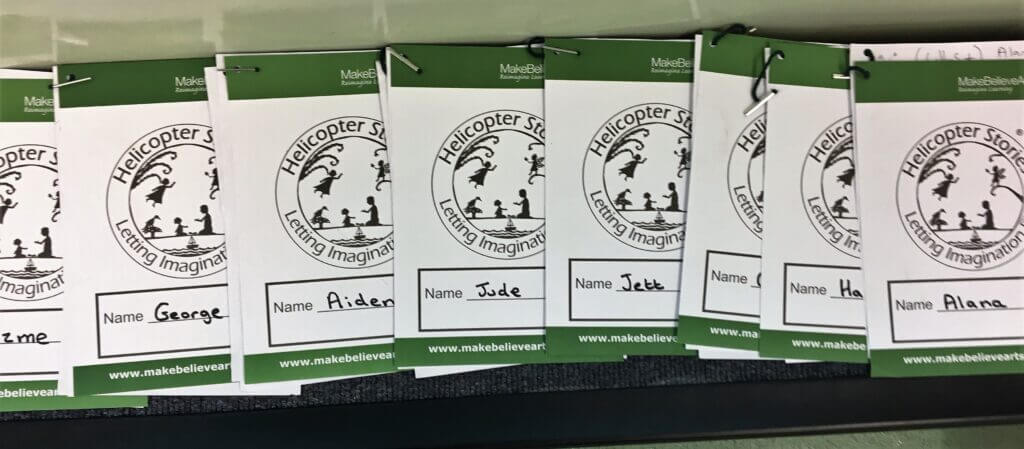
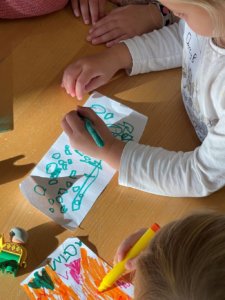
There is no hard and fast rule about how to keep a record of the children’s stories you collect during a Helicopter Stories session, although it is important that the size of the paper is A5 or a similarly small size. This is because if you scribe stories on A4 paper they will end up being too long and it will be difficult to bring them to life through the acting out.
In this blog post I have decided to share some of the things that work for me re: keeping a record of a child’s stories, and to explain how my thinking has developed over time, often as a result of things I have seen in other setting, or through conversations between Isla Hill and myself that have made me reflect in different ways.
Early Days:
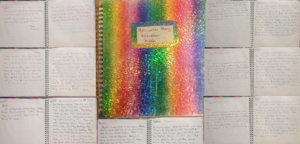
I still have my very first Helicopter Stories class book that I used when I first started working with the approach in 1999.
In those early days, I’d purchase a beautiful square shaped hardback book for every class I worked with. I would write each story inside, placing the child’s name and the date at the top of the page.
If I wanted to track the development of the stories for a particular child I had to flick through the pages till I found each of their entries and then I’d type them up so that that I could look at them in one go.
I liked the ritual of the class book, but it does make it harder to notice the more subtle changes that take place in every child’s story, especially when they have been engaged in the approach over a long period of time.
Scribing in Duplicate:

During the early years of MakeBelieve Arts, Isla and I had the opportunity to visit the Rice University Centre for Education in Houston, Texas. The centre runs a training programme around the work of Vivian Gussin Paley, (the now retired kindergarten teacher and renowned author of 13 books, who developed the Storytelling and Story Acting approach.)
The teachers at Rice University scribe children’s stories in Triplicate books. By placing a piece of carbon paper between every sheet, they create three copies of each story. One copy goes in the child’s file, one is sent home, and one stays in the Triplicate book as a record of the stories of everyone in the class.
Returning from Rice University, Isla and I began using Duplicate books, so that we could leave one copy with the school and keep the book for our own records. This worked for a while, but it never felt satisfying. The paper was too thin, and although this was vital to enable the carbon to work, it didn’t command the same value for the children’s stories as the thicker paper did.
By tearing a copy of each story out of the Duplicate book and placing it in an individual folder, we solved the problem of viewing all the stories from one child in a single place, but the carbons copies left in the book were often hard to read, and as each page was a bit smaller than A5 it was impossible to cram in the longer stories that were emerging as children grew more confident.
A5 Paper and Individual Books:
Several years ago, I grew tired of Duplicate books, and ended up guillotining pieces of A4 paper in half on a regular basis and using these to scribe children’s stories. (That was before I discovered you can buy A5 paper pre-cut – oh the delights.)
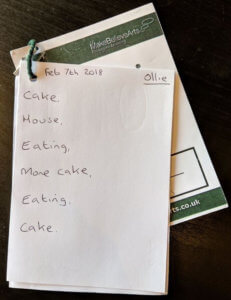
Then one day a teacher from Essex, who I had been working with on a regular basis, had a brilliant idea. She created a cover for each of the children in her class, and using a treasury tag, she joined together all of their stories, adding any new ones to the back of their individual book at the end of each session.
The Benefits of Individual Books:
There are so many values to the Individual Books.
Having every story told by an individual child in one place, creates a fantastic record, showing you how their language is developing, their use of imagery and metaphor, the themes that fascinate them, and those they have left behind.
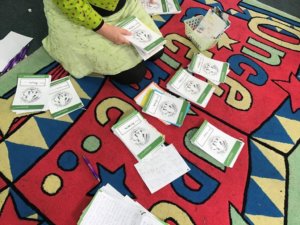
But there are also other benefits. Some of the Reception and Yr1 classes I work with leave the books out, either hanging them on the wall, or laying them out on a shelf. Children often sit reading their own books, or using their emergent reading skills to retell a version of one of their stories to a friend. Books are shown to parents when they come to pick the children up, and they can become a storehouse for other bits of writing and drawings that have come about as part of the Helicopter Stories session.
Writing on an A5 Whiteboard:
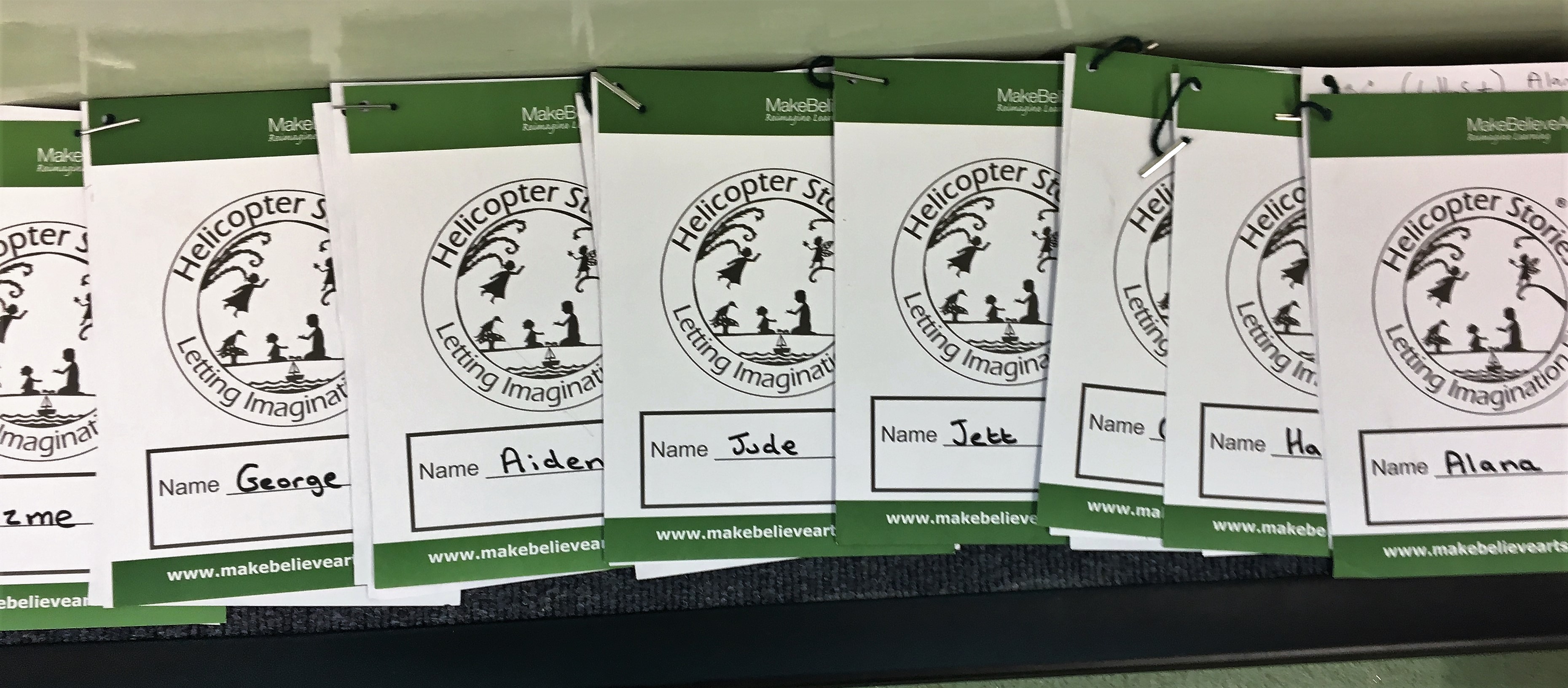
And finally, here is another way of recording stories that I discovered recently. I was speaking to a woman who works in a Forest School. She told me that they scribe their children’s stories on small whiteboards, as its hard to use paper when they are working outside all the time and it goes soggy. To keep a record of the children’s stories they take a photo of the whiteboard. The photo goes into a file for each child, creating an online record.
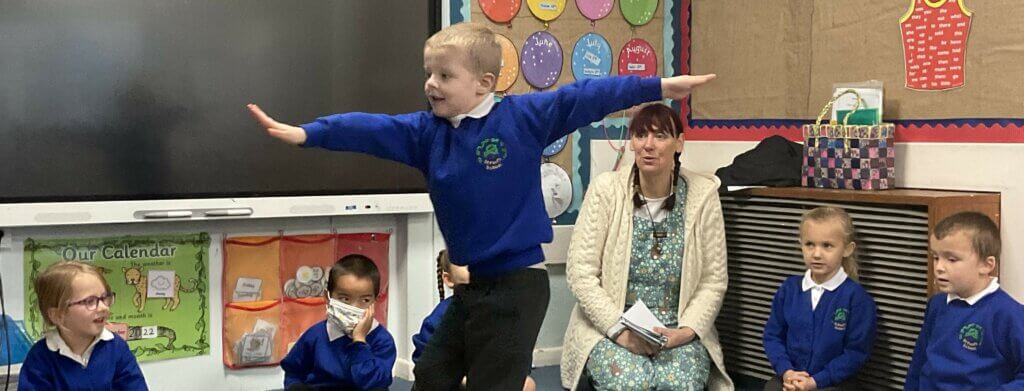
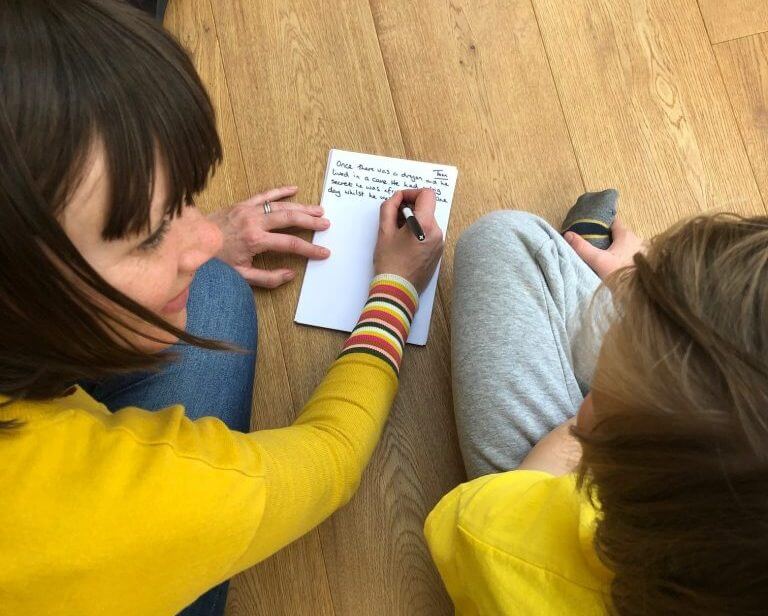
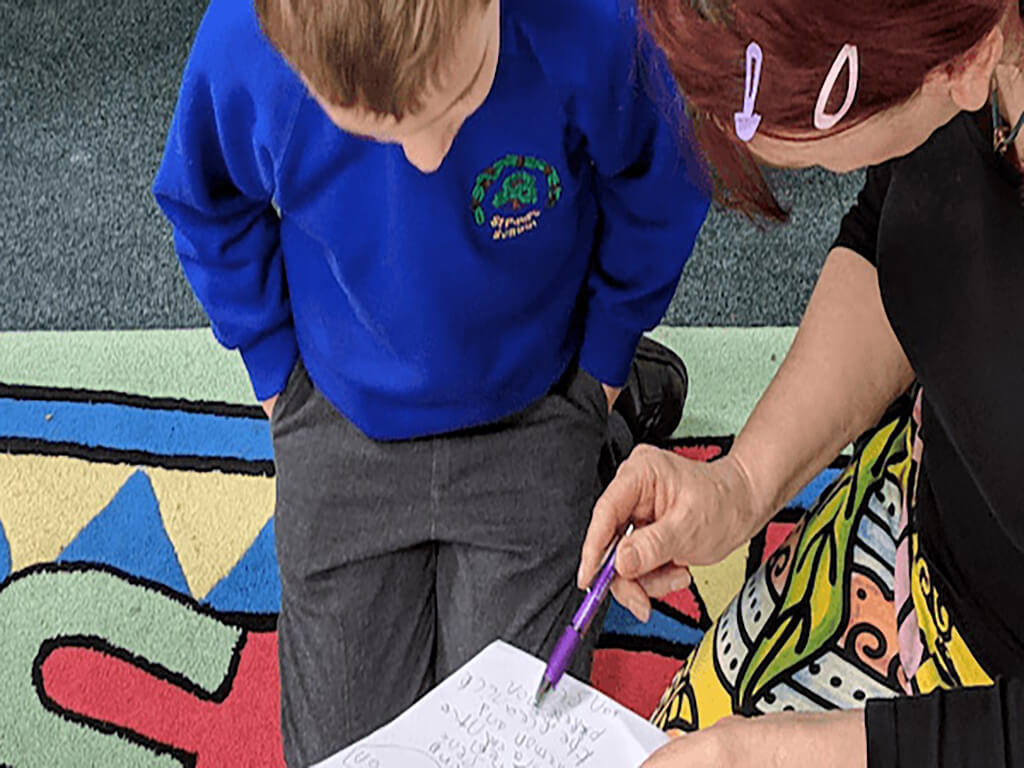
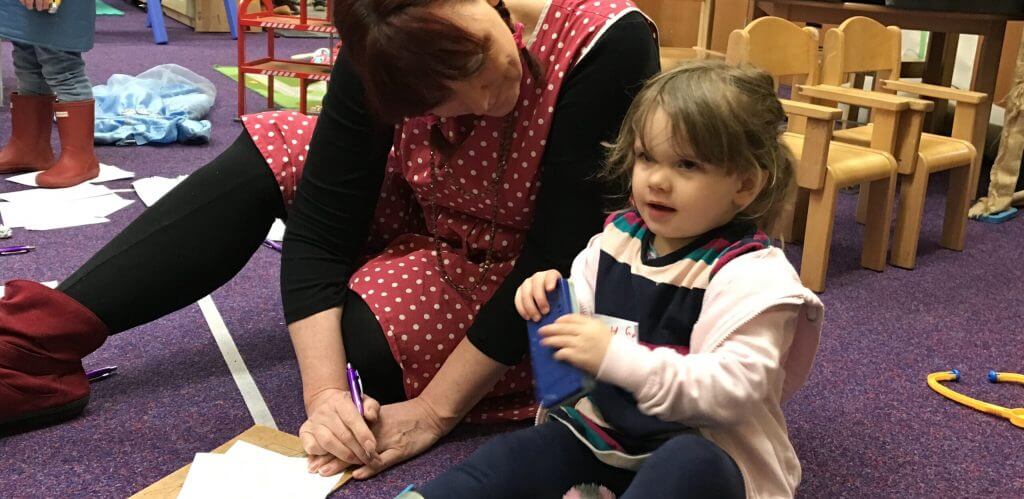
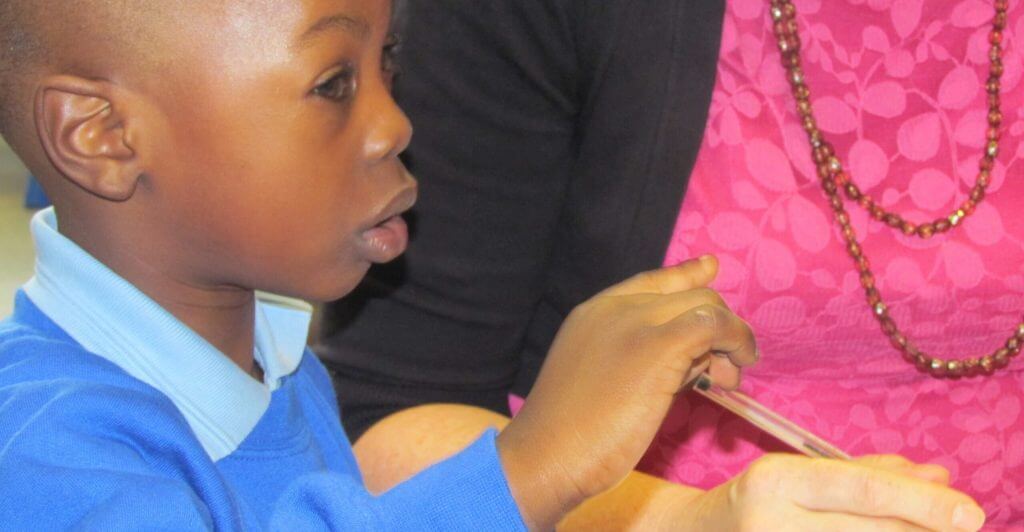
Responses